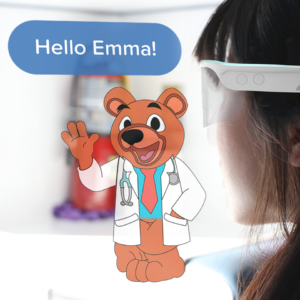
View Case Study
Teddy, an AI bear, provides emotional support, reassurance, and distraction to children in hospitals and ambulances through mixed reality.
Being transported to hospitals in an ambulance can be an extremely stressful and uncomfortable experience for children. The paramedic’s primary function as a healthcare provider is compromised when valuable time is spent offering reassurance and emotional support to a child. Teddy combines the powerful technological capabilities of mixed reality and artificial intelligence. Teddy creates an environment that is interactive, social, and adapts to the patients and their specific injury. A child’s health and well-being are dependent on more than just their medical treatment. Through positive and affirming interactions, Teddy alleviates fear and helps to reduce the impacts of emotional trauma. By offering paramedics flexibility and agility through technology, we strive to maximize the positive impact healthcare providers can have on the lives of the children that require their services.
- Why this project is worthy of a UX Award:
Teddy has the capability of changing the entire experience of healthcare, specifically for children. The mixed reality (MR) technology allows the perceived environment to be manipulated, allowing the child to be immersed in an augmented space that is most conducive to their well-being. Through the implementation of mixed reality, the cost of renovating the physical interior and infrastructure of the hospital can be saved. The technology allows hospitals to alter their interiors by digital means instead, creating greater flexibly, and the ability to customize the experience of every patient. Teddy is an artificially intelligent character that can keep the child company and seamlessly share information with doctors and paramedics. The healthcare industry could heavily benefit from this experiential innovation.
- Submitted By: Savannah College of Art and Design
See More 2017 Submissions >>